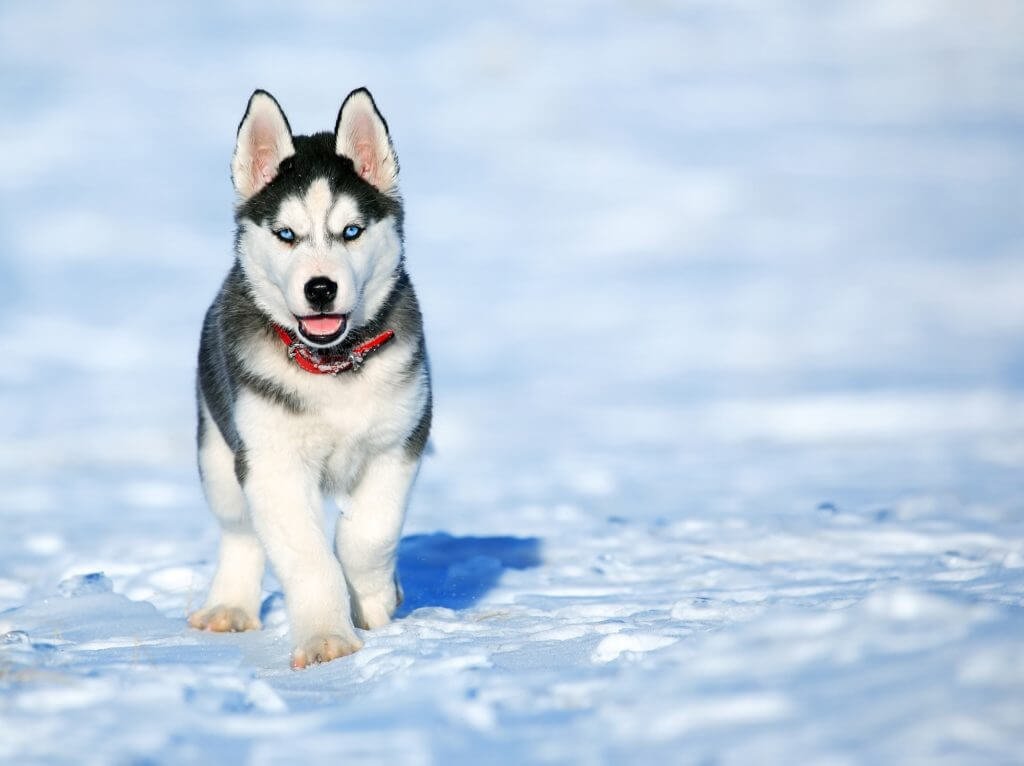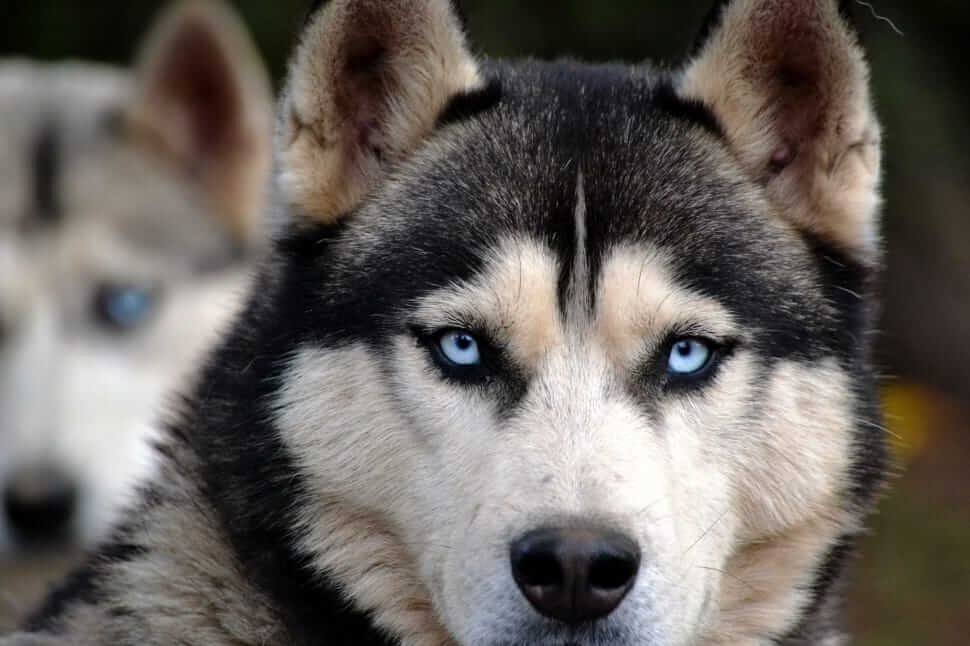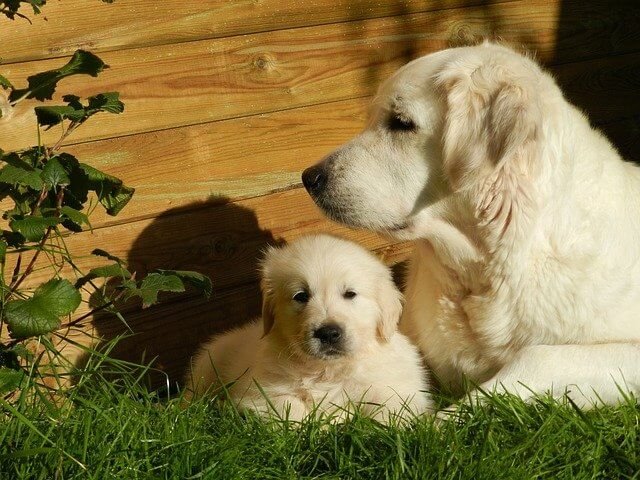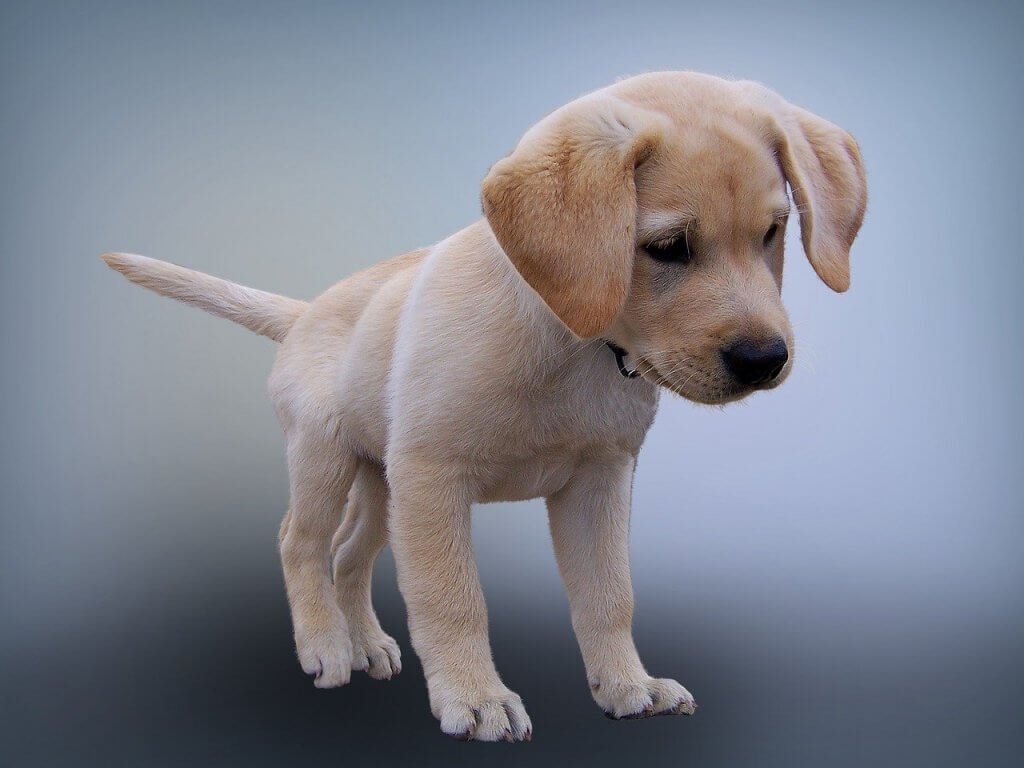Do you know, Between 8 and 10 percent of Siberian husbands have hereditary cataracts and are reasons for Siberian Husky Blue Eyes.
There is currently no scientific evidence that eye color correlates with cataracts in Siberian husbands. Yet the idea remains widespread among breeders that blue-eyed husbands are more likely to develop the disorder. There is a very high incidence of congenital eye problems in the huskies as a whole.
Also Read: Siberian Husky Price In India
Table of Contents
Do Siberian Huskies have blue eyes?
The Siberian husky is one of the few breeds of dogs in which blue eyes are familiar. Huskies may have two brown eyes, two blue, each colored or partial colored eyes (brown and blue mixed in the same iris). All of these are considered acceptable for the breed standard (the criteria for identifying show dogs).
Also Read:
Golden Retriever Price In India | Labrador Dog Price in India | Siberian Husky Price In India
Rottweiler Price | Beagle Price In India | Great Dane price in India
Lhasa Apso Price in India | Rottweiler vs Pitbull | Pomeranian price
Rampur Greyhound | Chihuahua price in India | Grey Husky
There is a common belief that blue eyes are weaker than brown eyes due to the lack of pigment and therefore, the risk of sun damage and cataracts is high.
This is not true – Siberian husky blue eyes lack melanin, but they are pigmented. The only eye colour that lacks pigment is the red albino eye colour. Most cataracts in husbands are also unrelated to sun damage but develop very early in life because the pup has inherited two copies of a recursive gene affecting the lens.
Husky breeders see many hundreds or thousands of puppies, and they claim that blue-eyed dogs are at greater risk of cataracts, but currently, there is no research to back it up. This issue can be further complicated because the eye that develops cataracts can often appear blue.
Also Read: Types of Huskies – Your Guide to Huskies
Siberian Husky Hereditary Cataract
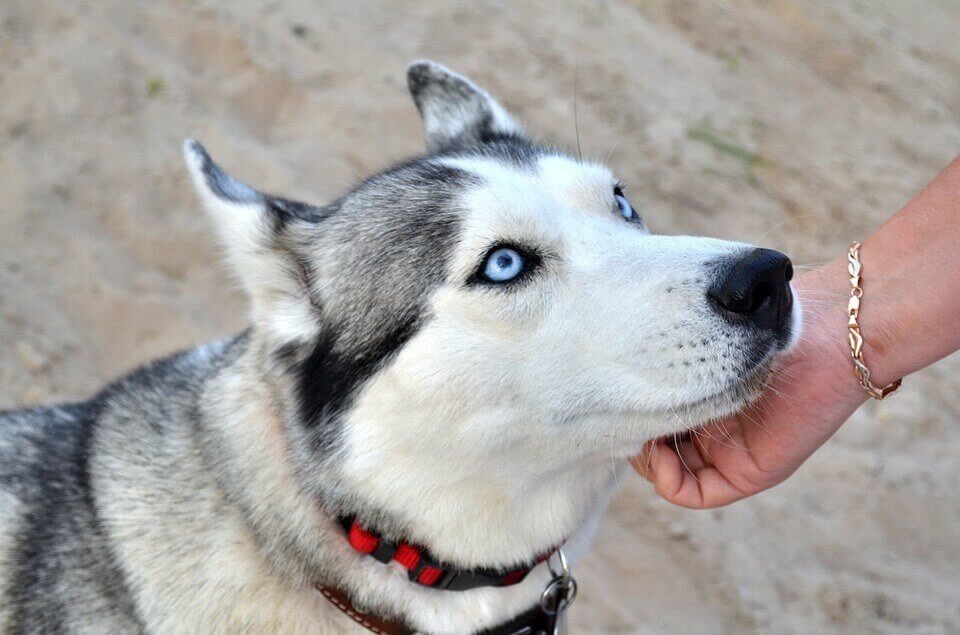
Huskies are one of the few breeds that suffer from genetic cataracts. Unlike most cataracts, which develop in elderly individuals, hereditary (or juvenile) cataracts usually appear by the time a puppy is one year old, and puppies begin to develop as young as three months old. Can.
A cataract produces a protein film within the eyeball, which blocks or distorts the lens. They can affect one or both eyes and can lead to partial or total blindness.
Note: Shop for Handmade Easter Eggs – Woolly Felt
Corneal dystrophy condition of Siberian Husky Blue Eyes
Corneal dystrophy is a different condition but is often mistaken for cataracts. It is also common in Siberian huskies, and the damaged eye may appear in Siberian husky blue eyes.
In corneal dystrophy, the fatty film forms above the cornea to the outside of the eye. This rarely leads to blindness.
Canine Eye Registry disorders
Because eye disorders are so common in Siberian husbands, there are breed registries to confirm that breeding dogs have recently undergone eye screening. Huskies can be registered with the Canine Eye Registry Foundation or the Siberian Husky Ophthalmological Registry. Before purchasing a purebred puppy, it is a good idea to confirm that its parents are registered with one of these organizations.
It is considered to be the original Cancer caste. The Siberian husky comes from the northeast of Siberia, specifically from Chukotka, Russia. It is an entirely Nordic race similar to wolves.
They were initially been reared by the Chukchi tribe, who used them for grazing, and even as companion dogs.
These dogs always have the characteristic of being vigilant. They are strong, but not heavy. On the contrary, they are very light, which makes them very sharp. He has a compact and muscular body that is well covered with hair.
In fact, its fur is usually abundant and dense, but of medium length. Siberian husky change their hair twice a year. For this reason, they need to be brushed vigorously at least thrice a week.
This type of dog requires a lot of exercises, so they like to be outside. He loves to walk and run. Regarding their personality, they are friendly with both people and other dogs. They are usually independent but not alone. In fact, because they are accustomed to living in herds, they cannot tolerate loneliness.
The Alaskan husky is not a breed in itself, but a type of dog named because it is dedicated to pulling a sledge. These dogs descend from Siberian wolves. Siberian husky blue eyes.

In fact, many of them carry DNA from the Siberian husky in their veins. He was brought to the area between 1908 and 1909 by the absconding trader William Gosak for a sledge race.
This type of horse is basically a mixed breed sledge dog, characterized by its ability to work and its appearance. Compared to Siberian husbands, Alaskans have a thinner texture and less fur. Its head is also thinner, and taller than the Siberian variety and moreover, they have more distinct eyes on the sides.
Like Siberian, Alaskan dogs may have blue or brown eyes. It is worth noting that although huskies are commonly known to have blue eyes, only 20% of them have this colour.
Another 20% have a mixed colour, i.e., one brown and one blue.
There are also crossings between Alaskan Kirk and Siberian Husky. They are called Alaska American Eskimo Dogs.
What is the rarest Husky eye colour?
Huskies are among those only real dogs to have blue eyes, and they are usually bred because of this.
Probably the most common eye colours for huskies are brown and blue.
For a husky to find green eyes the best way will be to own both parents with green eyes, but infrequently if a husky has a parent with green eyes, they will get green eyes too.
Additionally, heterochromia is incredibly common in huskies, with multicoloured eyes. It’s hard to predict precisely what colour their eyes are likely to be, as blue eyes are a mutation. My husky puppy has just one eye blue and my partner is blue and half brown.
Useful Links:
Also Read:
Golden Retriever Price In India | Labrador Dog Price in India | Siberian Husky Price In India
Rottweiler Price | Beagle Price In India | Great Dane price in India
Lhasa Apso Price in India | Rottweiler vs Pitbull | Pomeranian price
Rampur Greyhound | Chihuahua price in India | Grey Husky


